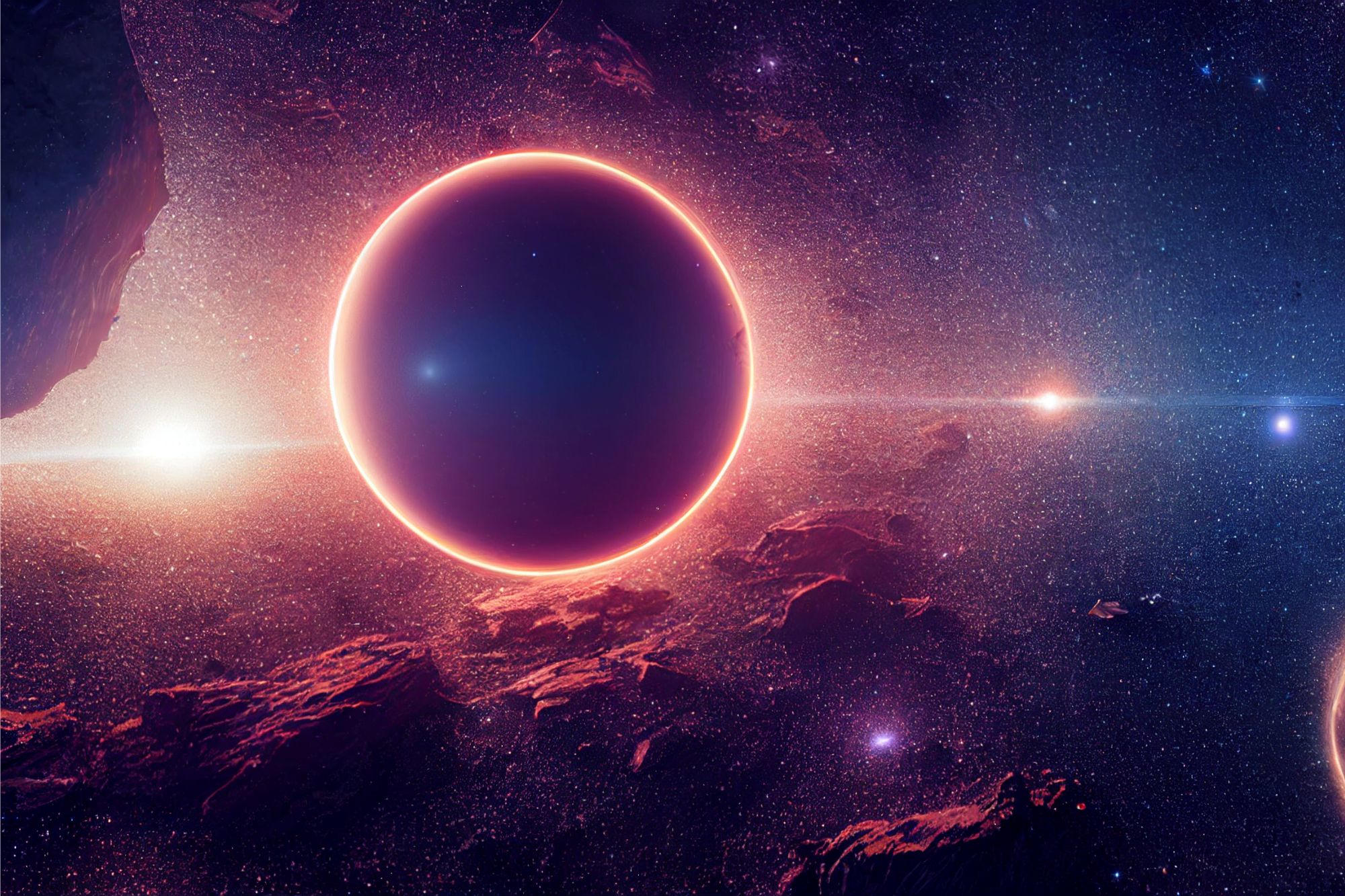Scientists have developed a groundbreaking AI-based method to detect signs of life on other planets. This method, with 90% accuracy, distinguishes between biological and abiotic samples by analyzing molecular patterns. It promises to revolutionize space exploration and our understanding of life’s origins, with potential applications in various fields including biology and archaeology.
“The Holy Grail of astrobiology” – New machine learning technique can determine whether a sample is of biological or non-biological origin with 90% accuracy.
Scientists have discovered a simple and reliable test for signs of past or present life on other planets – “the holy grail of astrobiology.”
In a paper recently published in the journal Proceedings of the National Academy of Sciences, a seven-member team, funded by the John Templeton Foundation and led by Jim Cleaves and Robert Hazen of the Carnegie Institution for Science, reports that, with 90% accuracy, their artificial intelligence-based method distinguished modern and ancient biological samples from those of abiotic origin.
Revolutionizing Space Exploration and Earth Sciences
“This routine analytical method has the potential to revolutionize the search for extraterrestrial life and deepen our understanding of both the origin and chemistry of the earliest life on Earth,” says Dr. Hazen. “It opens the way to using smart sensors on robotic spacecraft, landers and rovers to search for signs of life before the samples return to Earth.”
Most immediately, the new test could reveal the history of mysterious, ancient rocks on Earth, and possibly that of samples already collected by the Mars Curiosity rover’s Sample Analysis at Mars (SAM) instrument. The latter tests could be conducted using an onboard analytical instrument nicknamed “SAM” (for Sample Analysis at Mars).

This image taken by NASA’s Perseverance rover on Aug. 6, 2021, shows the hole drilled in a Martian rock in preparation for the rover’s first attempt to collect a sample. It was taken by one of the rover’s hazard cameras in what the rover’s science team has nicknamed a “paver rock” in the “Crater Floor Fractured Rough” area of Jezero Crater. Credit: NASA/JPL-Caltech
“We’ll need to tweak our method to match SAM’s protocols, but it’s possible that we already have data in hand to determine if there are molecules on Mars from an organic Martian biosphere.”
Key Takeaways from the New Research
“The search for extraterrestrial life remains one of the most tantalizing endeavors in modern science,” says lead author Jim Cleaves of the Earth and Planets Laboratory, Carnegie Institution for Science, Washington, DC.
“The implications of this new research are many, but there are three big takeaways: First, at some deep level, biochemistry differs from abiotic organic chemistry; second, we can look at Mars and ancient Earth samples to tell if they were once alive; and third, it is likely this new method could distinguish alternative biospheres from those of Earth, with significant implications for future astrobiology missions.”
The Role of AI in Differentiating Biotic and Abiotic Samples
The innovative analytical method does not rely simply on identifying a specific molecule or group of compounds in a sample.
Instead, the researchers demonstrated that AI can differentiate biotic from abiotic samples by detecting subtle differences within a sample’s molecular patterns as revealed by pyrolysis gas chromatography analysis (which separates and identifies a sample’s component parts), followed by mass spectrometry (which determines the molecular weights of those components).
Vast multidimensional data from the molecular analyses of 134 known abiotic or biotic carbon-rich samples were used to train AI to predict a new sample’s origin. With approximately 90% accuracy, AI successfully identified samples that had originated from:
- Living things, such as modern shells, teeth, bones, insects, leaves, rice, human hair, and cells preserved in fine-grained rock
- Remnants of ancient life altered by geological processing (e.g. coal, oil, amber, and carbon-rich fossils), or
- Samples with abiotic origins, such as pure laboratory chemicals (e.g., amino acids) and carbon-rich meteorites.
The authors add that until now the origins of many ancient carbon-bearing samples have been difficult to determine because collections of organic molecules, whether biotic or abiotic, tend to degrade over time.
Surprisingly, in spite of significant decay and alteration, the new analytical method detected signs of biology preserved in some instances over hundreds of millions of years.
Deciphering the Chemistry of Life and the Potential for Future Discoveries
Says Dr. Hazen: “We began with the idea that the chemistry of life differs fundamentally from that of the inanimate world; that there are ‘chemical rules of life’ that influence the diversity and distribution of biomolecules. If we could deduce those rules, we can use them to guide our efforts to model life’s origins or to detect subtle signs of life on other worlds.”
“These results mean that we may be able to find a lifeform from another planet, another biosphere, even if it is very different from the life we know on Earth. And, if we do find signs of life elsewhere, we can tell if life on Earth and other planets derived from a common or different origin.”
“Put another way, the method should be able to detect alien biochemistries, as well as Earth life. That is a big deal because it’s relatively easy to spot the molecular biomarkers of Earth life, but we cannot assume that alien life will use DNA, amino acids, etc. Our method looks for patterns in molecular distributions that arise from life’s demand for “functional” molecules.
“What really astonished us was that we trained our machine-learning model to predict only two sample types – biotic or abiotic – but the method discovered three distinct populations: abiotic, living biotic, and fossil biotic. In other words, it could tell more recent biological samples from fossil samples – a newly plucked leaf or vegetable, say, versus something that died long ago. This surprising finding gives us optimism that other attributes such as photosynthetic life or eukaryotes (cells with a nucleus) might also be distinguished.”
AI’s Analytical Capabilities in Unraveling Complex Patterns
To explain the role of AI, co-author Anirudh Prabhu of the Carnegie Institution for Science uses the idea of separating coins using different attributes – monetary value, metal, year, weight, or radius, for example – then going further to find combinations of attributes that create more nuanced separations and groupings. “And when hundreds of such attributes are involved, AI algorithms are invaluable to collate the information and create highly nuanced insights.”
Adds Dr. Cleaves: “From a chemical standpoint, the differences between biotic and abiotic samples relate to things like water solubility, molecular weights, volatility, and so on.”
“The simple way I would think about this is that a cell has a membrane and an interior, called the cytosol; the membrane is pretty water-insoluble, while the cell’s content is pretty water-soluble. That arrangement keeps the membrane assembled as it tries to minimize its components’ contacts with water and also keeps the ‘inside components’ from leaking across the membrane.”
“The inside components can also stay dissolved in water despite being extremely large molecules like chromosomes and proteins,” he says.
“So, if one breaks a living cell or tissue into its components, one gets a mix of very water-soluble molecules and very water-insoluble molecules spread across a spectrum. Things like petroleum and coal have lost most of the water-soluble material over their long histories.”
“Abiological samples can have unique distributions across this spectrum relative to each other, but they are also distinct from the biological distributions.”

3.5-billion-year-old Apex Chert from the wilds of Western Australia. Credit: Carnegie Science Earth and Planets Laboratory
The technique may soon resolve a number of scientific mysteries on Earth, including the origin of 3.5 billion-year-old black sediments from Western Australia — hotly debated rocks that some researchers contend hold Earth’s oldest fossil microbes, while others claim they are devoid of life signs.
Other samples from ancient rocks in Northern Canada, South Africa, and China evoke similar debates.
“We’re applying our methods right now to address these long-standing questions about the biogenicity of the organic material in these rocks,” Hazen says.
And new ideas have poured forth about the potential contributions of this new approach in other fields such as biology, paleontology, and archaeology.
“If AI can easily distinguish biotic from abiotic, as well as modern from ancient life, then what other insights might we gain? For example, could we tease out whether an ancient fossil cell had a nucleus, or was photosynthetic?” says Dr. Hazen.
“Could it analyze charred remains and discriminate different kinds of wood from an archeological site? It’s as if we are just dipping our toes in the water of a vast ocean of possibilities.”
Reference: “A robust, agnostic molecular biosignature based on machine learning” by H. James Cleaves, Grethe Hystad, Anirudh Prabhu, Michael L. Wong, George D. Cody, Sophia Economon and Robert M. Hazen, 25 September 2023, Proceedings of the National Academy of Sciences.
DOI: 10.1073/pnas.2307149120
The study was funded by the John Templeton Foundation.

Dr. Thomas Hughes is a UK-based scientist and science communicator who makes complex topics accessible to readers. His articles explore breakthroughs in various scientific disciplines, from space exploration to cutting-edge research.








